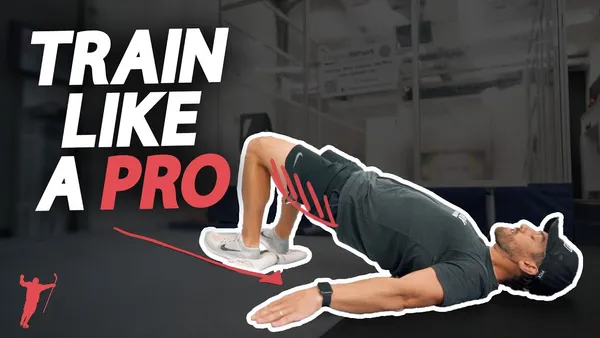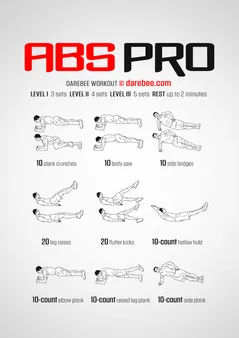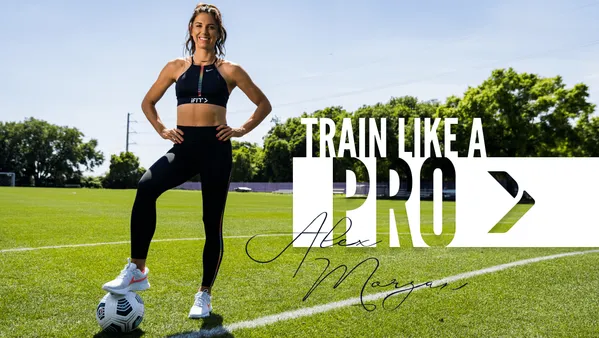Table of Contents
Unleash your inner athlete and embark on a transformative fitness journey with Kizworld's comprehensive guide on How to train like a calisthenics pro. Discover the art of bodyweight training and unlock your true potential. Elevate your strength, agility, and body control as you master the art of calisthenics. With guidance on workout routines, nutrition, and overcoming plateaus, this guide will empower you to achieve your fitness goals and unlock a world of possibilities.
How to Train Like a Calisthenics Pro: Tips and Tricks Unleashed
I. Calisthenics Training Fundamentals
Calisthenics Training Fundamentals
Mastering calisthenics requires a strong foundation in fundamental skills, movements, and exercises. These basics form the cornerstone of your calisthenics journey, paving the way for more advanced progressions and combinations.
To embark on this path, start by developing body awareness and control through static holds. These include planks, wall sits, and handstands, which target core strength, stability, and balance. These positions also pave the way for dynamic exercises like push-ups, squats, and pull-ups, which build muscle and strength while improving functional fitness.
[Related Post: The Basic Gymnastics Skills Every Beginner Should Know]
Progression and Consistency
Calisthenics is a progressive discipline, requiring patience and dedication to see results. Begin with exercises that suit your current fitness level, then gradually increase difficulty by adding reps, sets, or variations as you grow stronger.
Consistency is key to progress. Aim for regular workouts, even if it's just a few minutes daily. Over time, these small efforts accumulate, leading to significant improvements in strength, mobility, and body composition.
- Start with basic exercises and gradually increase difficulty.
- Focus on proper form and technique to prevent injuries.
- Incorporate rest and recovery into your routine to avoid burnout.
- Stay hydrated and maintain a balanced diet to support your training.
Nutrition and Lifestyle
A healthy lifestyle complements calisthenics training. Prioritize a balanced diet rich in whole foods, lean proteins, fruits, and vegetables to fuel your workouts and aid recovery. Stay hydrated by drinking plenty of water throughout the day.
Adequate sleep is crucial for muscle growth and repair. Aim for 7-8 hours of quality sleep each night to optimize your progress.
[Related Post: Top 5 Lifestyle Tips to Complement Your Calisthenics Training]
Common Mistakes
Avoid these common pitfalls to make the most of your calisthenics journey:
- Neglecting warm-up and cool-down: Always start with a dynamic warm-up to prepare your body for exercise and end with a static cool-down to promote recovery.
- Ignoring proper form: Prioritize technique over reps. Incorrect form can lead to injuries and hinder progress.
- Overtraining: Listen to your body and avoid pushing yourself too hard. Overtraining can lead to burnout and injuries.
Remember, calisthenics is a journey, not a race. Embrace the process, enjoy the challenges, and celebrate your achievements along the way.
II. Essential Calisthenics Exercises
Essential Calisthenics Exercises
To train like a calisthenics pro, mastering essential exercises is crucial. These bodyweight movements, ranging from foundational skills to advanced progressions, provide a solid foundation for building strength, mobility, and overall fitness. Embark on this journey by incorporating these core calisthenics exercises into your routine.
- Push-Ups: A cornerstone of calisthenics, push-ups engage the chest, triceps, and shoulders. Start with regular push-ups, gradually progressing to variations like incline push-ups, decline push-ups, and explosive plyometric push-ups.
- Pull-Ups: This exercise targets the back, biceps, and shoulders. Begin with assisted pull-ups using a resistance band if needed, then work towards unassisted pull-ups and advanced variations like the one-arm pull-up.
Visit our page on Calisthenics Exercises for a comprehensive guide to these movements and many more.
Beyond these fundamental exercises, calisthenics encompasses a wide spectrum of dynamic moves that showcase strength, agility, and control. These include:
- Handstand: This challenging pose strengthens the shoulders, core, and balance. Start by practicing against a wall and gradually transition to a freestanding handstand.
- Muscle-Up: A combination of a pull-up and a dip, the muscle-up requires explosive strength and coordination. Mastering this move is a significant milestone in calisthenics.
- Front Lever: This advanced exercise targets the core, shoulders, and back. It involves holding the body parallel to the ground while suspended from a bar.
- Back Lever: Similar to the front lever, the back lever is performed with the body facing down, engaging the back, shoulders, and core.
- Human Flag: This visually striking move demonstrates incredible core strength and control. It involves holding the body horizontally while suspended from a pole or bar.
Intermediate and Advanced Calisthenics Exercises
As you progress in your calisthenics journey, incorporate intermediate and advanced exercises to challenge your body and push your limits. These movements demand a high level of strength, coordination, and technique.
- Planche: This static hold requires incredible strength and balance. It involves supporting the body on the hands with the legs extended in front, resembling a human plank.
- Maltese: A progression from the planche, the Maltese is performed with the hands placed close together, requiring even greater strength and control.
- One-Arm Handstand Push-Up: This advanced calisthenics exercise tests upper body strength and stability. It involves performing a push-up while balancing on one hand and extending the other arm.
- 360 Muscle-Up: A dynamic variation of the muscle-up, the 360 muscle-up involves rotating the body 360 degrees while transitioning from a pull-up to a dip.
- One-Arm Front Lever: The pinnacle of calisthenics strength, the one-arm front lever is a testament to incredible core and shoulder strength. It involves holding the body parallel to the ground while suspended from one arm.
To learn more about the nuances of these intermediate and advanced exercises, explore our in-depth guide: Calisthenics Exercises.
Remember, safety is paramount in calisthenics. Always warm up properly, focus on technique, and progress gradually. With dedication and consistency, you'll unlock your full potential and achieve amazing feats of strength and control.
III. Advanced Calisthenics Techniques
Advanced Calisthenics Techniques
As you progress in your calisthenics journey, you'll naturally want to push the limits of your body and master more advanced skills. These techniques require a combination of strength, coordination, and balance. By incorporating them into your routine, you'll elevate your calisthenics practice and unlock new levels of physical prowess.
Remember, safety should always come first. Attempt these techniques gradually, with proper warm-up and technique progression to minimize the risk of injury.
Table: Advanced Calisthenics Techniques and Progressions
Skill | Progression | Description |
|---|---|---|
Human Flag | Tuck Flag → Straight Flag → One-Leg Flag | Hold your body parallel to the ground, supported by one arm while the other is extended. |
Planche | Pseudo Planche → Advanced Tuck Planche → Full Planche | Support your entire weight on your hands while your body is parallel to the ground, with your legs extended. |
Front Lever | Tuck Front Lever → Advanced Tuck Front Lever → Full Front Lever | Hang upside down from a bar, with your body parallel to the ground and your legs extended. |
Back Lever | Tuck Back Lever → Advanced Tuck Back Lever → Full Back Lever | Hang upside down from a bar, with your body parallel to the ground and your legs extended, facing away from the bar. |
Iron Cross | Tuck Iron Cross → Advanced Tuck Iron Cross → Full Iron Cross | Support your entire weight on two parallel bars, with your body forming a cross shape. |
To master these advanced techniques, focus on building your strength, particularly in your upper body and core. Incorporate weighted exercises into your routine, such as pull-ups and dips with added weight, to enhance your strength gains. Work on your grip strength by using grip trainers or doing towel pull-ups. Flexibility and mobility are also crucial, so include dynamic stretching and mobility exercises as part of your warm-up and cool-down.
Related Posts:
- How to Train Like a Gymnast
- The Best Gymnastics Exercises for Core Strength
- How to Improve Your Flexibility and Mobility with Gymnastics
Remember, patience is key when learning advanced calisthenics techniques. Focus on proper form and technique, gradually increasing the difficulty as you become more comfortable with each skill. With dedication and consistent practice, you'll unlock new levels of strength, control, and body awareness.
IV. Nutrition and Recovery for Calisthenics
Nutrition and Recovery for Calisthenics
To optimize your calisthenics training, it's crucial to prioritize proper nutrition and recovery. Here's a comprehensive guide to fueling your body and aiding its restoration:
- Balanced Diet: Consume a balanced diet rich in whole grains, lean proteins, healthy fats, fruits, and vegetables to provide your body with the essential nutrients it needs for energy, muscle growth, and repair.
- Protein Intake: Protein is vital for muscle growth and repair. Aim for 1.2 to 1.7 grams of protein per kilogram of body weight daily to support muscle development and recovery.
Essential Nutrients:
Nutrient | Benefits | Sources |
|---|---|---|
Carbohydrates | Energy source for high-intensity workouts | Whole grains, fruits, vegetables |
Protein | Muscle growth and repair | Lean meats, poultry, fish, beans, lentils |
Healthy Fats | Hormone production, cell function | Nuts, seeds, avocados, olive oil |
Vitamins and Minerals | Overall health and well-being | Fruits, vegetables, whole grains |
Hydration:
- Stay Hydrated: Maintain adequate hydration by drinking plenty of water throughout the day. Dehydration can negatively impact performance and recovery.
- Electrolyte Replenishment: During intense workouts, you lose electrolytes through sweat. Replenish them by consuming sports drinks or electrolyte-rich foods like coconut water.
Recovery Strategies:
- Adequate Sleep: Prioritize 7-8 hours of quality sleep each night. Sleep is essential for muscle recovery and overall well-being.
- Active Recovery: Engage in light activities like yoga, swimming, or walking on rest days to promote blood flow and aid recovery.
- Stretching and Foam Rolling: Incorporate stretching and foam rolling into your routine to improve flexibility, reduce muscle soreness, and prevent injuries.
- Massage: Treat yourself to a massage to release muscle tension, improve circulation, and accelerate recovery.
Supplements:
- Creatine: Creatine is a natural substance that can enhance muscle strength and power. Consider supplementing with creatine to support your calisthenics training.
- BCAAs: Branched-chain amino acids (BCAAs) are essential for muscle growth and repair. BCAA supplements can be beneficial for calisthenics athletes.
- Omega-3 Fatty Acids: Omega-3 fatty acids have anti-inflammatory properties that can aid in muscle recovery. Incorporate omega-3-rich foods like salmon, tuna, and flaxseeds into your diet or consider taking a supplement.
By following these nutrition and recovery guidelines, you can optimize your calisthenics training, enhance your performance, and accelerate your progress towards your fitness goals.
Related Posts:
- How to Train Like a Calisthenics Pro
- The Best Calisthenics Equipment and Gear
- The Best Calisthenics Exercises and Variations
V. Conclusion
Embracing calisthenics as a training method opens up a world of possibilities for achieving your fitness goals. By consistently following effective workout routines, maintaining a balanced diet, and continuously challenging yourself, you'll unlock the full potential of your body and mind. Calisthenics is more than just a workout regime; it's a lifestyle that promotes physical excellence and mental fortitude. As you progress on your calisthenics journey, remember to listen to your body, prioritize recovery, and never stop learning. With dedication and perseverance, you'll not only build an impressive physique but also cultivate a newfound appreciation for your body's incredible capabilities. Embrace the transformative power of calisthenics and embark on a path of strength, agility, and personal growth.